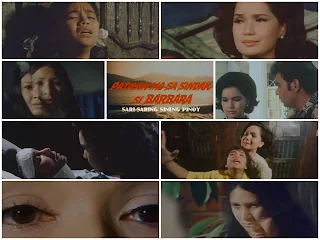Gerardo de Leon's films are often about people confronting certain despair. His subject is how they try to prevail in the face of unbearable circumstances. His plots are not about whether they succeed, but how they endure. He tells these stories in an unadorned style with elevated tension. De Leon's work holds many people in a hypnotic grip. They demonstrate how many films contain only diversions for the eyes and mind and use only the superficial qualities of their characters. Consider 48 Oras (Premiere Productions, Inc., 1950) and its close scrutiny of salient details. In De Leon's films there are no fancy zooms or other shots that call attention. He uses the basic vocabulary of long, medium, close and insert shots to tell what needs to be told about in every scene, no shock cutaways. He defies expectations of action cinema by focusing on Carding's (Rogelio de la Rosa) patience and perseverance by magnifying every detail with insistent close-ups. It's a drama where the slightest gesture carries the weight of a confession. In such austerity the tiniest of details take on a monumental significance. This is perhaps Filipino cinema in its purest form, freed from unnecessary accouterments and embellishments and the result is absolutely riveting. The audience is completely glued to Carding's every move. De Leon eliminates the artificiality of performance to get the essence of action by removing the focus from De La Rosa’s face, allowing the viewer to concentrate on film form and the represented action rather than the actor’s interpretation of it. We watch De La Rosa in the film with no extratextual associations or assumptions about his persona as we might associate certain characteristics with actors like Leopoldo Salcedo or Jose Padilla, Jr. We know only what we see, captured in De Leon’s medium shots that focus on action, avoiding close-ups that depend on the actor to emote. Rather, his close-ups serve to give us visual detail.
Art Director: Jose de los Reyes
Film Editor: Eugenio B. Acantilado
Story By: Cesar Gallardo
Screenplay By: Ding M. de Jesus
Photography By: Tommy Marcelino
Sound Engineer: Demetrio de Santos
Musical Director: Ariston Avelino
Directed By: Gerardo de Leon










